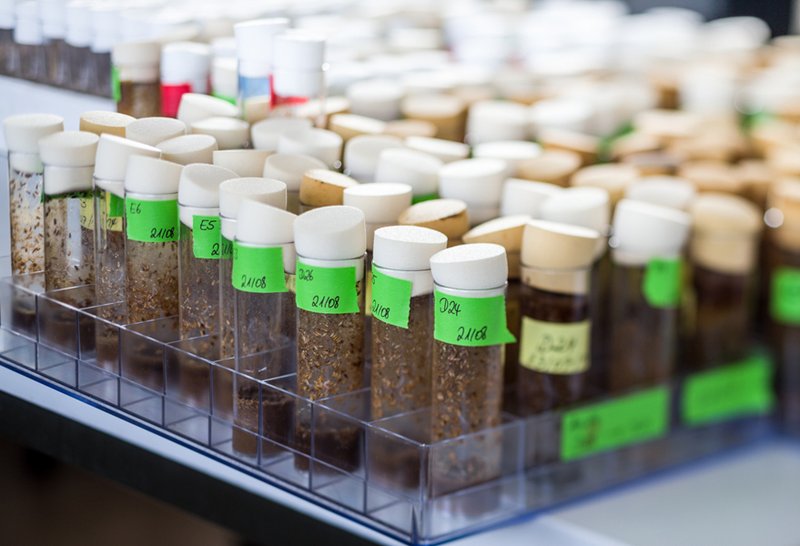2020-10-29
New therapy options: Fighting lung cancer with fruit flies

Fruit flies can be kept, reproduced and genetically manipulated relatively easily.
How to find new treatment options for lung cancer? DZL scientists developed a system that allows for screening of large numbers of substances potentially suitable for therapy. By using fruit flies as model system they found ways reducing the number of mouse experiments. The results of their study have been published in the journal Altex.
Immunotherapies revolutionized lung cancer treatment. However, they are not suitable for every patient and the production of antibodies is complex and comparably expensive. Therefore, investigation of new treatment options is still going on. DZL researchers from Kiel and Borstel employ a novel technique in order to find yet unknown therapeutics. They aim for a system that enables high throughput of many substances in parallel. They focus on lung cancers with frequent genetic mutations driving cell growth and proliferation (so-called oncogenes). This type of tumor occurs in one third to a half of lung cancer patients.
The DZL scientists work with the fruit fly Drosophila, an animal that is easily bred and often used for genetic studies. They transferred one of the mutated genes to the fly and enabled expression just in the airways or parts thereof. Furthermore they introduced the gene of the green fluorescent protein (GFP) to allow for fluorescence analysis of the flies. The result: The researchers found significant changes for the 19 oncogenes under investigation. In some cases the fly larvae died, in part their airways exhibited pathological changes: thickening of airway epithelium as well as changes in airway branching and length. Cell nuclei were enlarged and cells proliferated more than normal. Moreover, larvae became sensitive to reduced oxygen supply. This feature is typical for fast-growing tumors in which angiogenesis (and oxygen supply) can’t keep up. In further experiments the researches focused on two read-outs working in large-scale systems: larval death and GFP fluorescence – the latter as a marker for tumor mass.
As an example, the DZL scientists introduced a mutated Ras oncogene into flies and treated them with different drugs. Actually, they found that the substance trametinib reduced tumor mass significantly. Prof. Thomas Roeder (Christian-Albrechts University Kiel) who conducted the study sums up: “We proved that our test system is suitable for finding new substances for lung cancer therapy.” The method has several advantages: As larvae can be investigated in microplates, fluorescence can be detected automatically. This allows for parallel testing a large number of substances from compound libraries. Finally, testing on flies will reduce animal testing on vertebrates, especially mice. Just the few substances identified in fly experiments need to be tested in vertebrates.
Results of the study have been published by DZL researchers from Research Center Borstel and Christian-Albrechts University Kiel in collaboration with the Fraunhofer Institute for Biotechnical Engineering (IBMT) in the journal Alternatives to animal experimentation.
Thomas Roeder plans to employ the now-established system in practice: „Together with IBMT we will test the efficacy of substances from compound libraries in our lung cancer models of different mutations in the near future. Our focus will be on combination therapies.”
Source: Bossen J*, Uliczka K*, Steen L, Neugebauer P, Mai MM, Fink C, Stracke F, Heine H, Roeder T (2020) Driver mutations in major lung cancer oncogenes can be analyzed in Drosophila models. Altex [Epub Oct 22] (ARCN)
* shared first authors
/jbul
Calendar
Upcoming events
2024-04-24
74th Meeting of ARCN
2024-04-30
Virtual DZL AID Kick-off Seminar
2024-05-29
